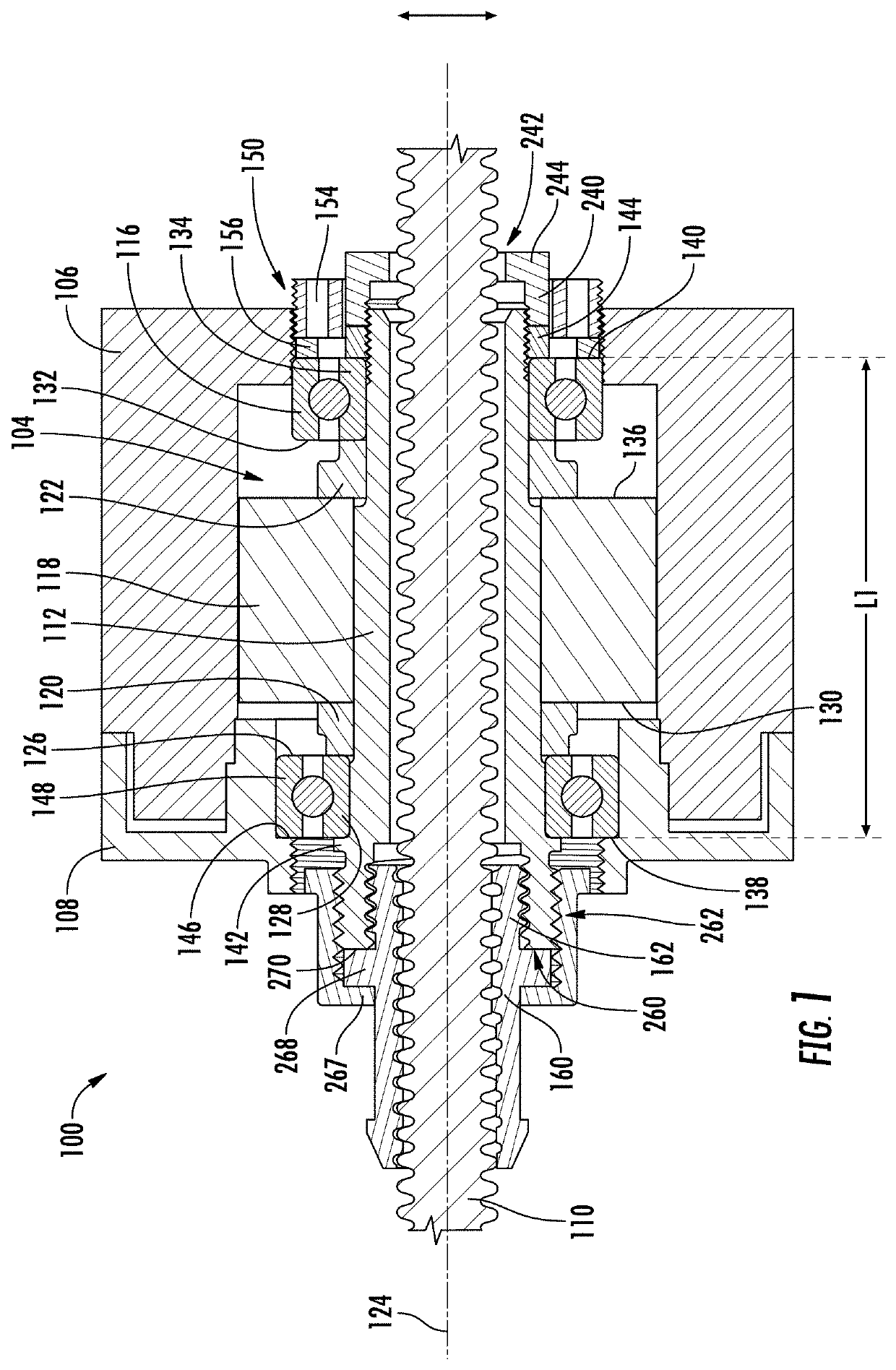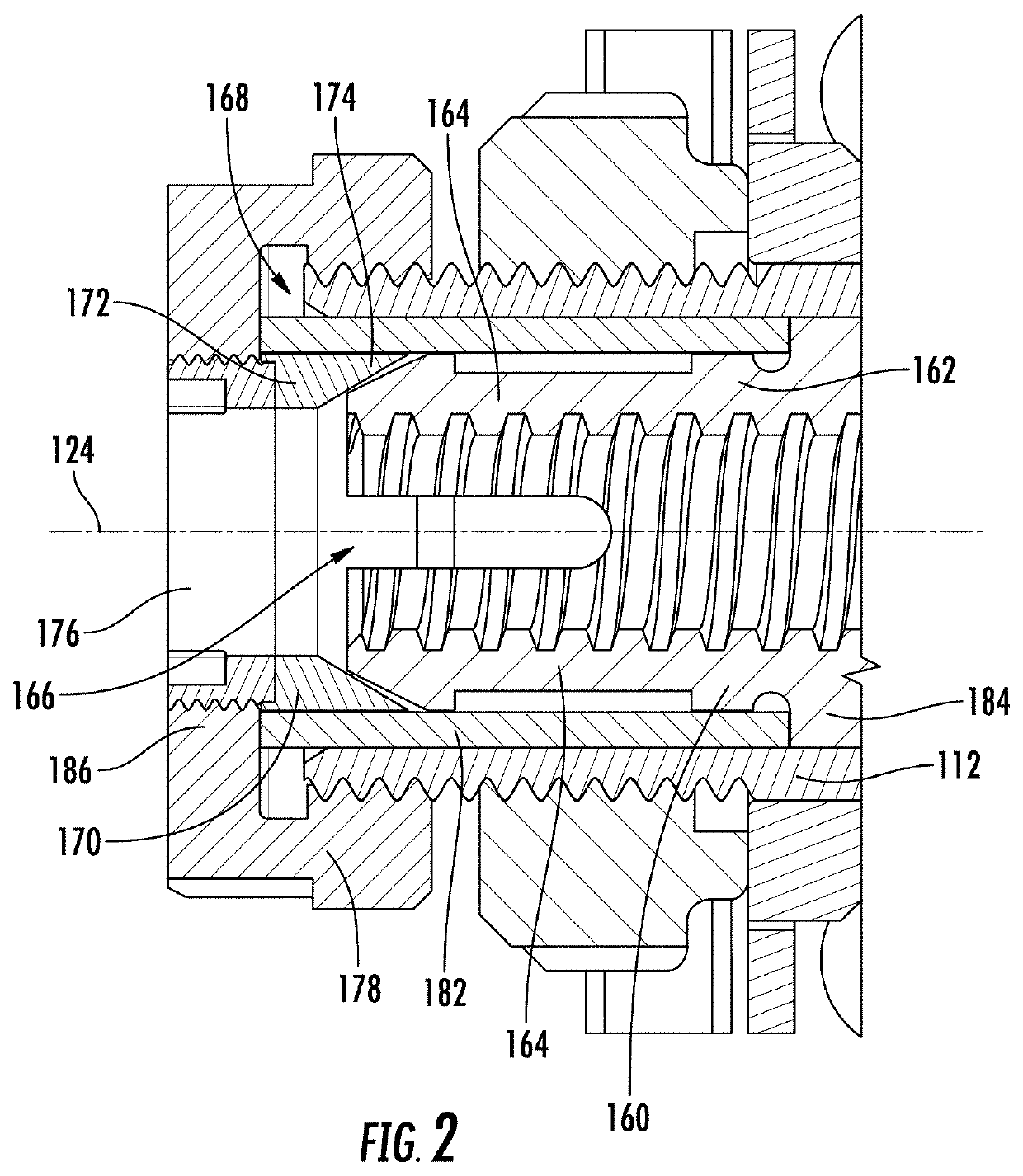Axial Anti-backlash stepper/servo motor
a technology of axial backlash and stepper motor, which is applied in the field of motors, can solve the problems of reducing the position accuracy of objects, axial backlash and accuracy are not typically addressed, and the stepper motor is not designed for axial loads, so as to improve control and positioning, and reduce backlash
- Summary
- Abstract
- Description
- Claims
- Application Information
AI Technical Summary
Benefits of technology
Problems solved by technology
Method used
Image
Examples
Embodiment Construction
[0087]FIG. 1 is a cross-sectional illustration of a motor 100. The motor 100 includes a motor body 102 and a rotor assembly 104 located within the motor body 102. The motor body includes a stator 106 and a cover member 108 which may also be referred to herein as an end bell 108. The rotor assembly 104 is operably coupled to an externally threaded screw 110 (e.g. a lead screw) to drive the screw 110.
[0088]The rotor assembly 104 includes a rotor shaft 112, first and second bearings 114, 116, a magnetic core 118, and first and second axial standoffs 120, 122.
[0089]When mounted within the motor body 102, bearings 114, 116 radially support the rotor shaft 112 for rotation about a rotor shaft axis 124. The magnetic core 118 is operably angularly secured to the rotor shaft 112 such that rotational forces generated between the magnetic core 118 and the stator 106 cause the rotor shaft 112 to rotate. This angular securement may occur by way of a press fit or an adhesive between the rotor sha...
PUM
 Login to View More
Login to View More Abstract
Description
Claims
Application Information
 Login to View More
Login to View More - R&D
- Intellectual Property
- Life Sciences
- Materials
- Tech Scout
- Unparalleled Data Quality
- Higher Quality Content
- 60% Fewer Hallucinations
Browse by: Latest US Patents, China's latest patents, Technical Efficacy Thesaurus, Application Domain, Technology Topic, Popular Technical Reports.
© 2025 PatSnap. All rights reserved.Legal|Privacy policy|Modern Slavery Act Transparency Statement|Sitemap|About US| Contact US: help@patsnap.com



